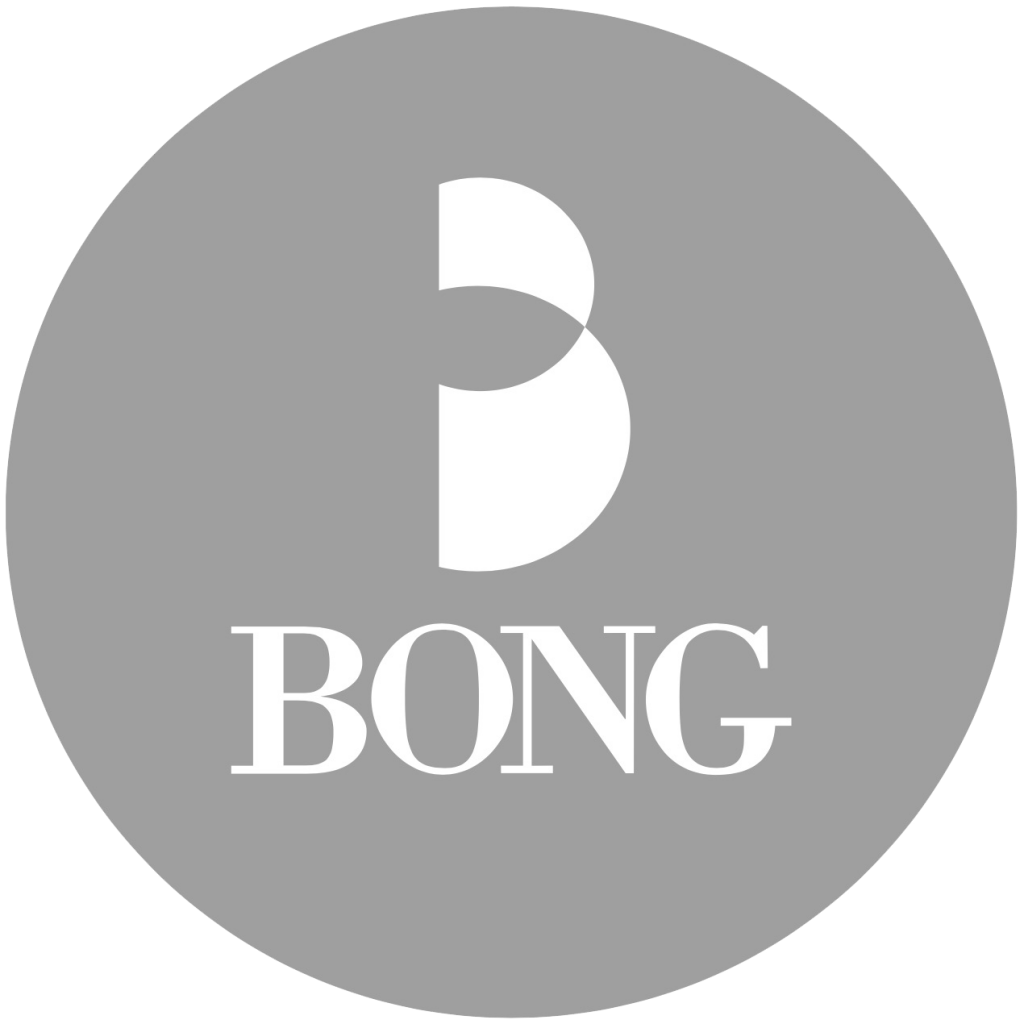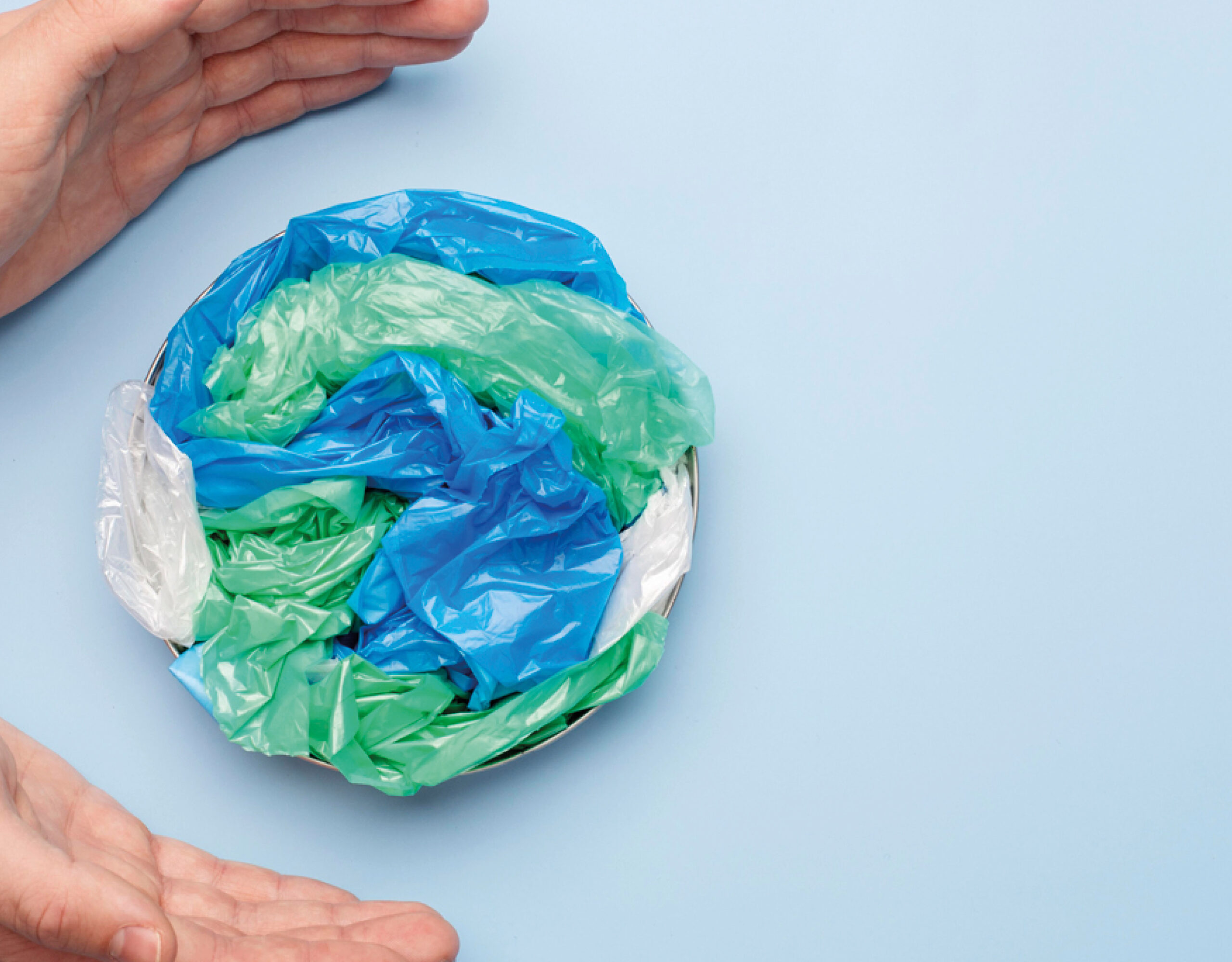Top 10 Key Measures of the Packaging and Packaging Waste Regulation
The Packaging and Packaging Waste Regulation (PPWR) was subject to a vote by the European Parliament on November 22, 2023. Its objective is to establish a unified legislative framework across all European Union member states, aiming to collectively meet waste reduction targets. We delves into the main measures and obligations established by the PPWR for European nations and economic organizations.
Glossary: how is the term ‘packaging’ defined within the PPWR regulation?
‘Packaging’ means items of any materials that are intended to be used for the containment, protection, handling, delivery or presentation of products and that can be differentiated into packaging formats based on their function, material and design.
1. “Packaging is a key environmental concern”
2.PPWR’s mission: Minimize the environmental harm caused by packaging and packaging waste
3. Zoom on 10 main measures from the Packaging and Packaging Waste Regulation
- Requirement #1: All packaging shall be recyclable by 2030
- Requirement #2: Compulsory Integration of Recycled Materials in Plastic Packaging
- Requirement#3: Minimize Packaging Weight and Volume
- Requirement #4 : Plan and Facilitate Packaging Reuse
- Requirement #5: Communicate Packaging Material Information
- Requirement #6: Communicate Packaging Reuse Information
- Requirement #7: Ensure the Reuse of Transport Packaging
- Requirement #8: EU Conformity Declaration for Packaging
- Requirement #9: Member states must decrease the quantity of packaging waste.
- Requirement #10: States are mandated to attain distinct recycling objectives
4. PPWR: Negotiations and a complex implementation journey
5. Bong Retail Solutions: A Planet-Conscious Packaging Specialist
“Packaging is a key environmental concern”
In the initial sections of the project, the Packaging and Packaging Waste Regulation acknowledges a critical diagnosis: the increase of packaging coupled with low-reuse and recycling rates have resulted in a notable surge in CO2 and other emissions, along with the overexploitation of natural resources, loss of biodiversity, and pollution.
The project raises three main phenomena:
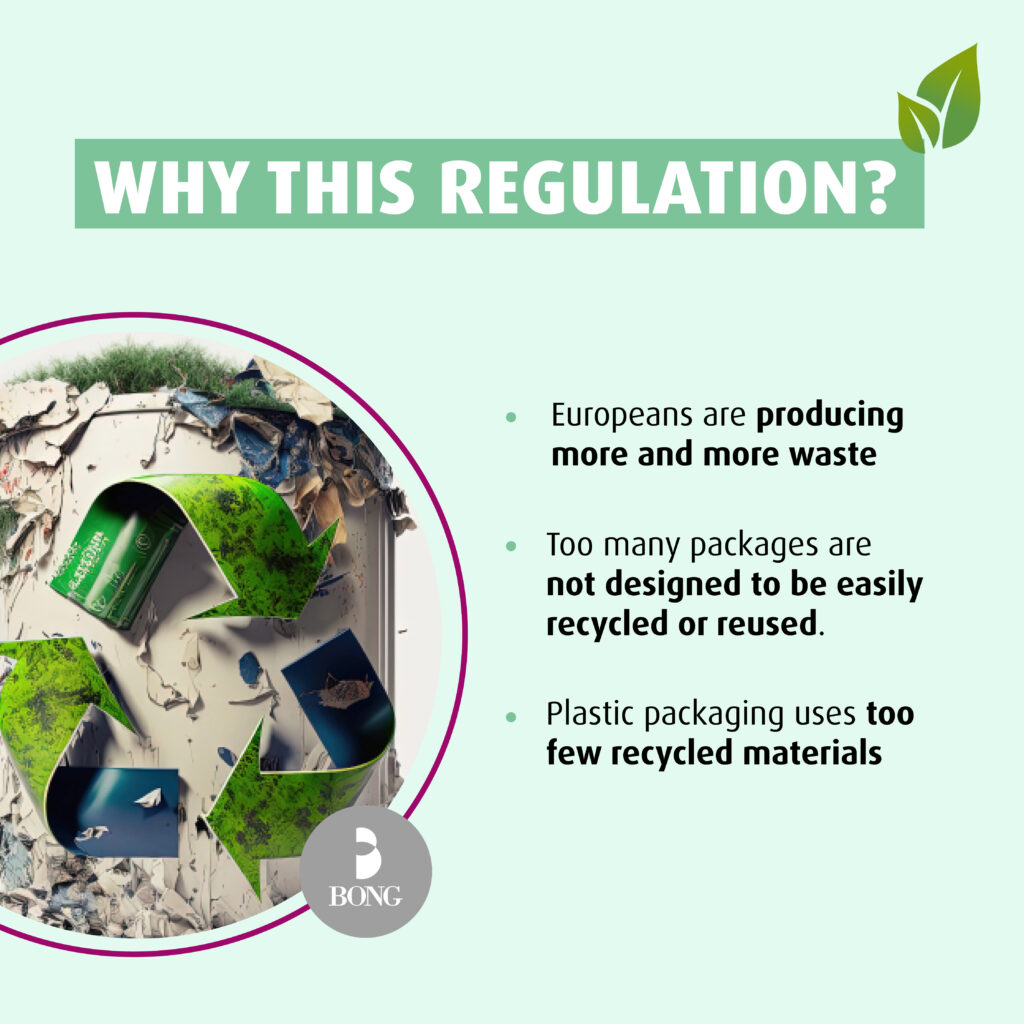
- There is a concerning rise in waste generation among Europeans, with an average of nearly 180 kg of packaging waste per individual annually. Total packaging waste generation in the EU has risen from 66 million tonnes in 2009 to 78.5 million tonnes in 2019. Without intervention, this figure is projected to surge by 19% by 2030, reaching an even more alarming 46% for plastic waste.
- A significant number of packaging materials cannot be recycled or reused easily. From 2012 till 2020, the share of unrecyclable packaging has grown significantly. Additionally, the labeling intended to assist consumers in correctly sorting their packaging waste is currently unclear.
- The production of packaging, particularly plastic packaging, doesn’t use enough recycled materials (secondary raw materials).
PPWR's mission: Minimize the environmental harm caused by packaging and packaging waste
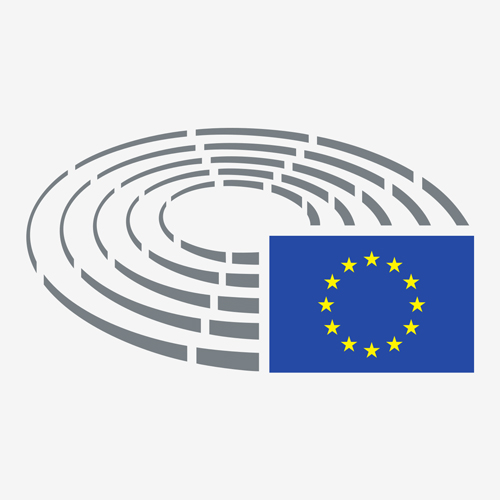
On November 22, 2023, in response to these predictions and a growing environmental consciousness, the Parliament voted on the Packaging and Packaging Waste Regulation (PPWR) project presented by the Environment Commission.
The legislative proposal approved by the European Parliament is designed to “minimize the adverse effects of packaging and packaging waste on the environment.” It achieves this goal by setting forth requirements that cover the entire life cycle of packaging, from the selection of raw materials to the ultimate disposal, applicable to all EU member states.
The PPWR specifically targets the following objectives:
- Decrease waste generation, particularly excessive packaging, with a specific focus on reducing plastic waste by 5% by 2030 compared to the levels in 2018.
- Guarantee the recyclability of all plastic packaging.
- Encourage the adoption of circular economy practices and the reuse of packaging.
- Enhance the utilization of recycled materials and secondary raw materials in the manufacturing of packaging.
- Improve consumer information by implementing better labeling and marking on packaging.
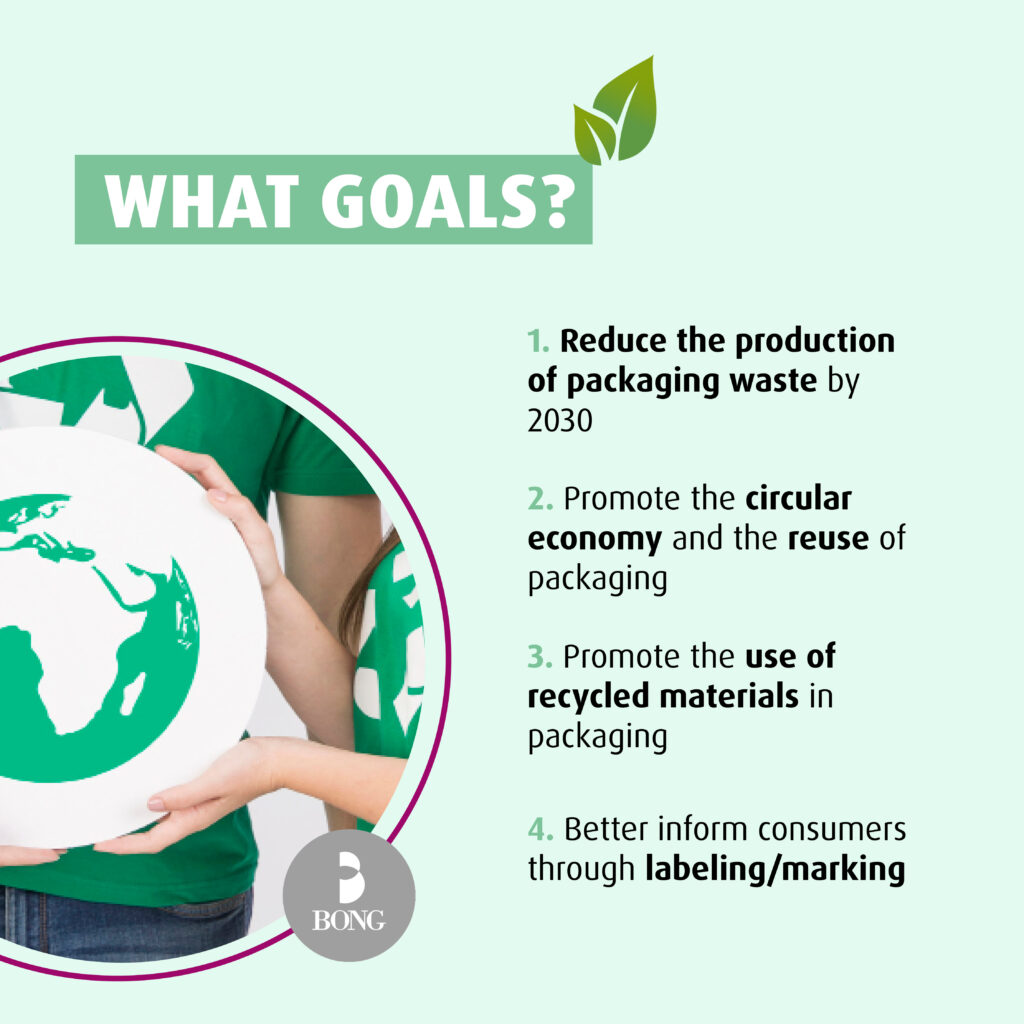
Zoom on 10 main measures from the Packaging and Packaging Waste Regulation
Requirement #1: All packaging shall be recyclable by 2030
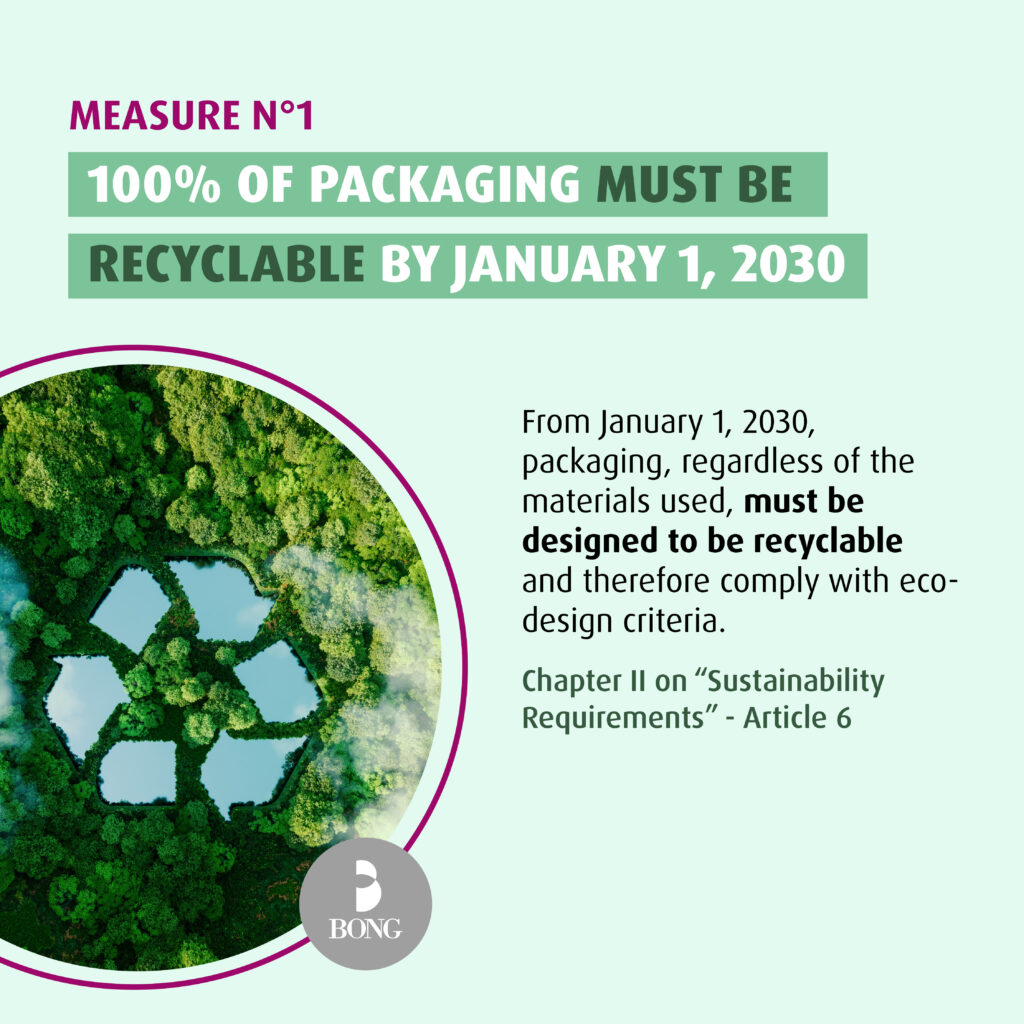
The first crucial measure of the PPWR mandates that, starting from January 1, 2030, all packaging, regardless of the materials employed (cardboard, paper, plastic, etc.), must be specifically designed for recyclability.
According to the PPWR, for packaging to be considered recyclable, it must adhere to the following criteria:
- The packaging must be designed to be recycled
- The packaging can be separately collected in an effective and efficient manner
- The packaging must be routed to a well-defined waste stream without jeopardizing the recyclability of other waste streams
- The packaging should be recyclable to a degree where the resulting secondary raw materials are of sufficiently high quality to substitute primary raw materials
- Capable of large-scale recycling (from 2035)
Additionally, beginning January 1, 2030, packaging falling into performance class E will no longer be categorized as recyclable.
Requirement #2: Compulsory integration of recycled materials in plastic packaging
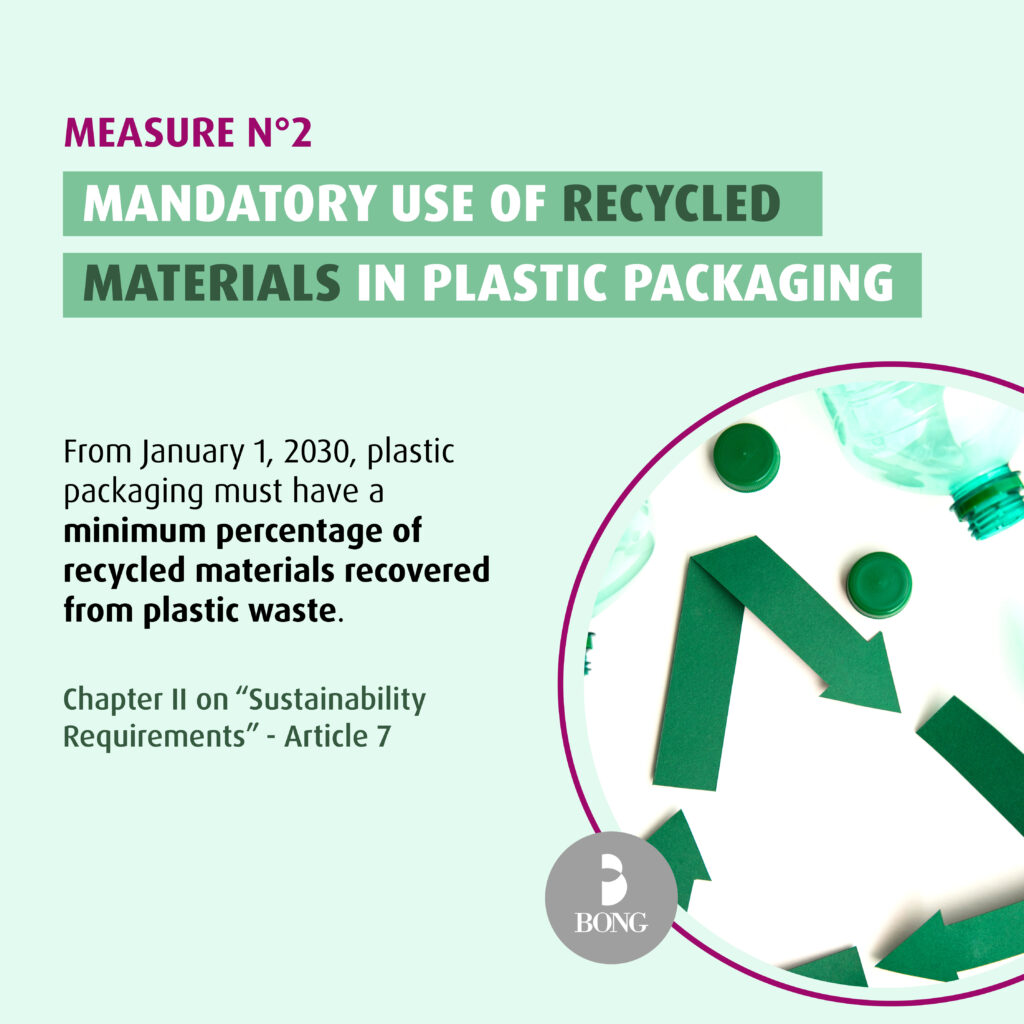
Effective January 1, 2030, plastic packaging or the plastic component of packaging must incorporate a minimum percentage of recycled materials retrieved from plastic waste.
The percentages are specified in the PPWR as follows:
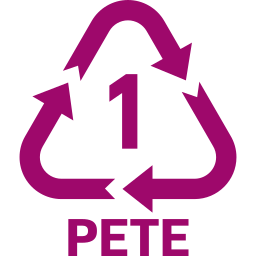
30%
for contact sensitive packaging made from polyethylene terephthalate (PET) as the major component
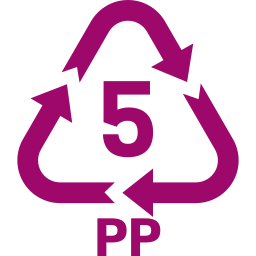
10%
for contact sensitive packaging made from plastic materials other than PET, except single use plastic beverage bottles
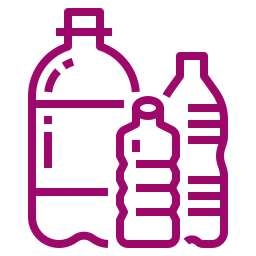
30%
for single use plastic beverage bottles
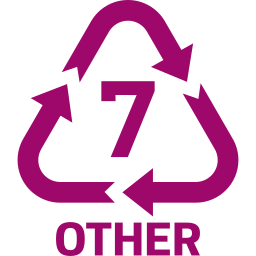
35%
for plastic packaging other than those referred just before
Requirement #3: Minimize Packaging Weight and Volume
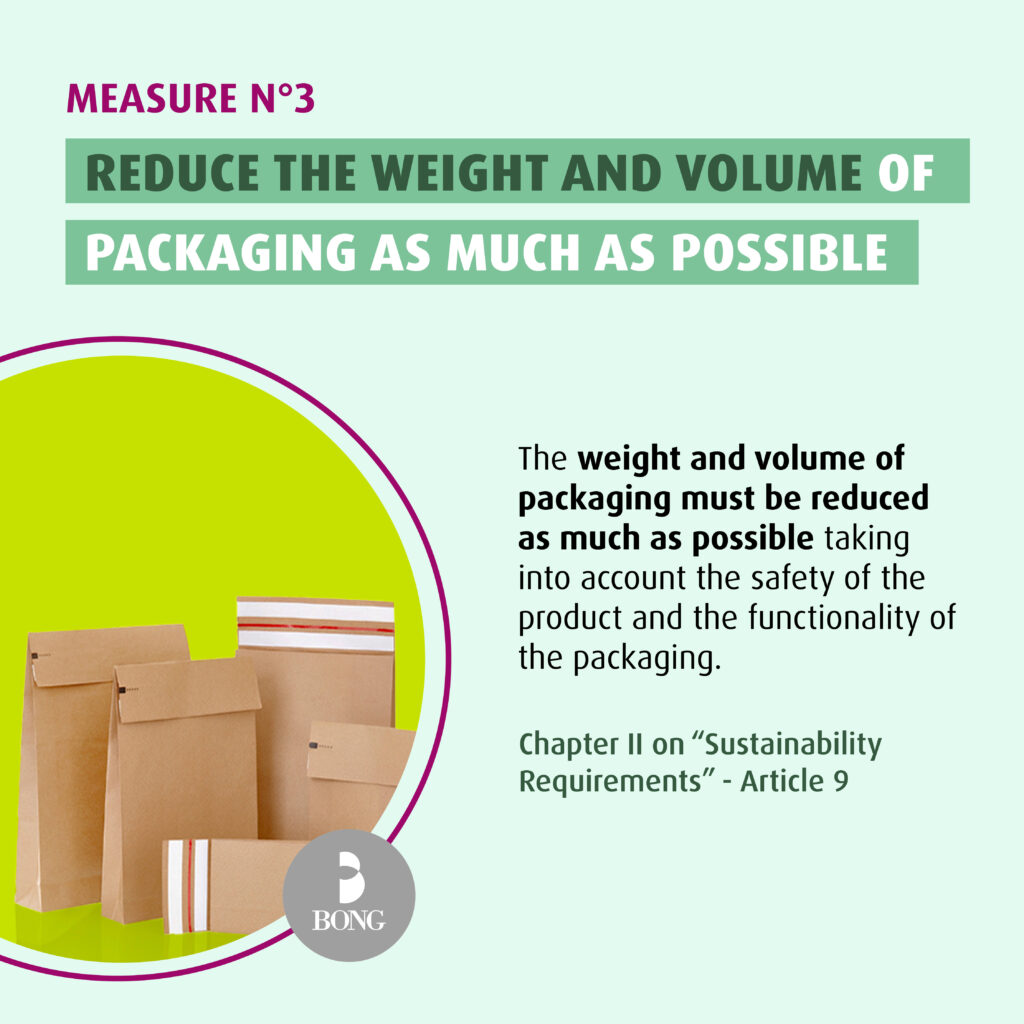
This PPWR measure focuses on the reduction of both weight and volume in packaging to avoid excessive packaging and eliminate unnecessary empty spaces. Packaging weight and volume should be minimized, ensuring consideration for the safety and functionality of the packaging. Packaging designed solely to enhance the perceived volume of the product, such as double walls, double bottoms, or unnecessary layers, will be prohibited. Compliance with this requirement must be validated with technical documentation.
Moreover, the presence of empty space, especially during goods transport, must be minimized. Spaces filled with materials like paper shavings, air cushions, bubble wrap, or other padding materials are categorized as empty space.
Our e-Green ecommerce bags were specially designed to reduce the weight and volume. Made of FSC® certified paper, this flexible paper packaging is lightweight, resistant and adapt to your product to reduce shipping costs and waste.
Requirement #4: Plan and Facilitate Packaging Reuse
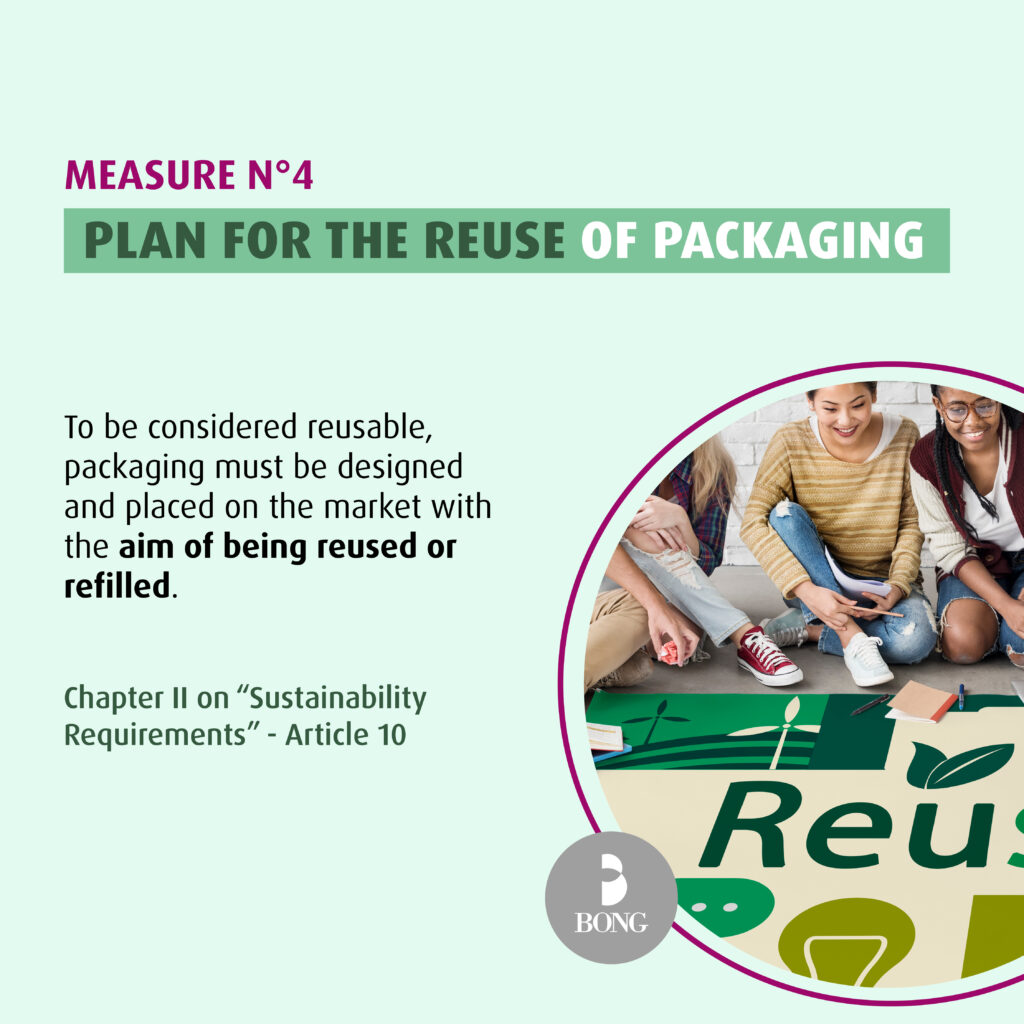
This measure is geared toward encouraging reuse and fostering a circular economy. For packaging to qualify as reusable, it must be deliberately designed, crafted, and marketed with the explicit purpose of being used multiple times (or refilled) for a purpose similar to its original design.
The responsibility for planning and organizing the reuse lies with the producer, who is also obligated to inform the end consumer of the specific packaging’s reuse possibilities.
Our e-Double and e-Green paper e-commerce bags are designed with a double strip, an excellent way to facilitate customer returns while helping to limit the impact on the environment
Requirement #5: Communicate Packaging Material Information
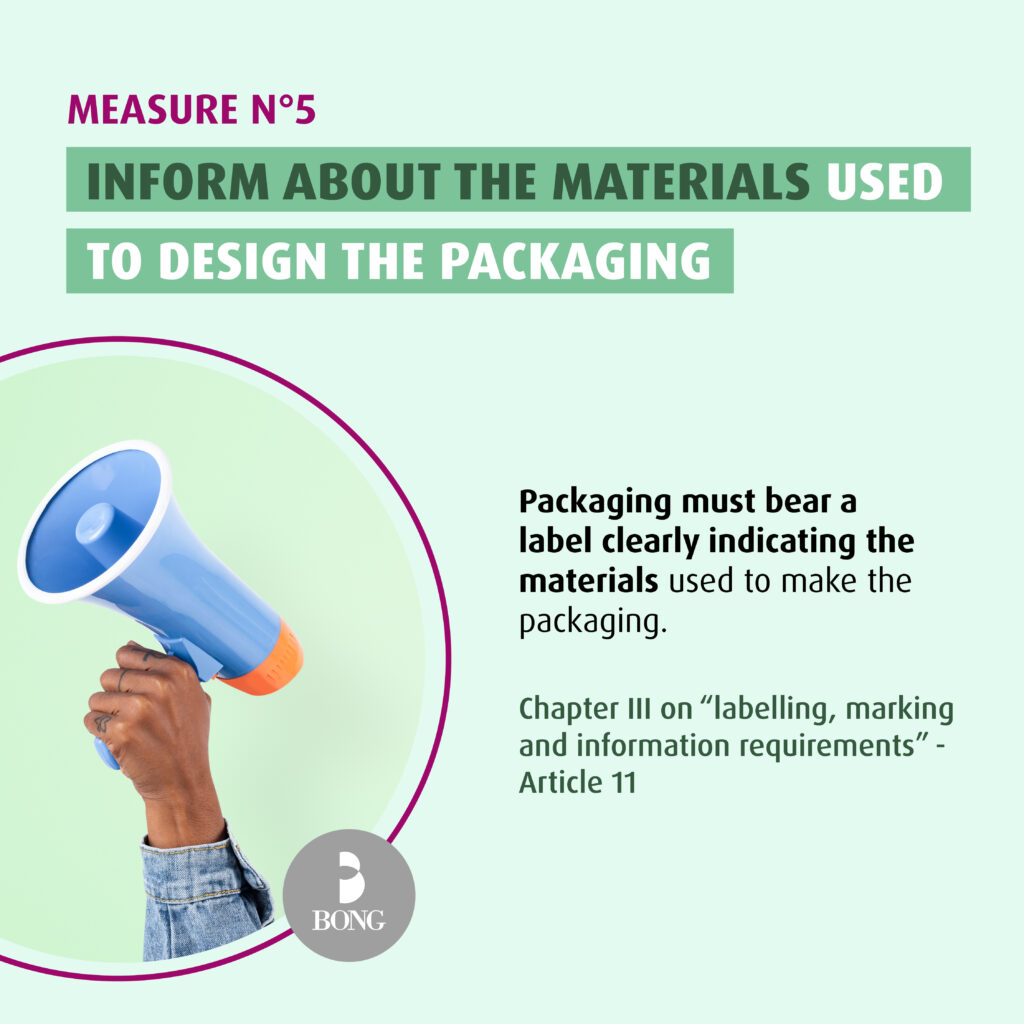
Within 42 months of the regulation taking effect, packaging must display a label explicitly stating the materials used to produce the packaging. While this directive excludes transport packaging, it is applicable to electronic commerce packaging.
Requirement #6: Communicate Packaging Reuse Information
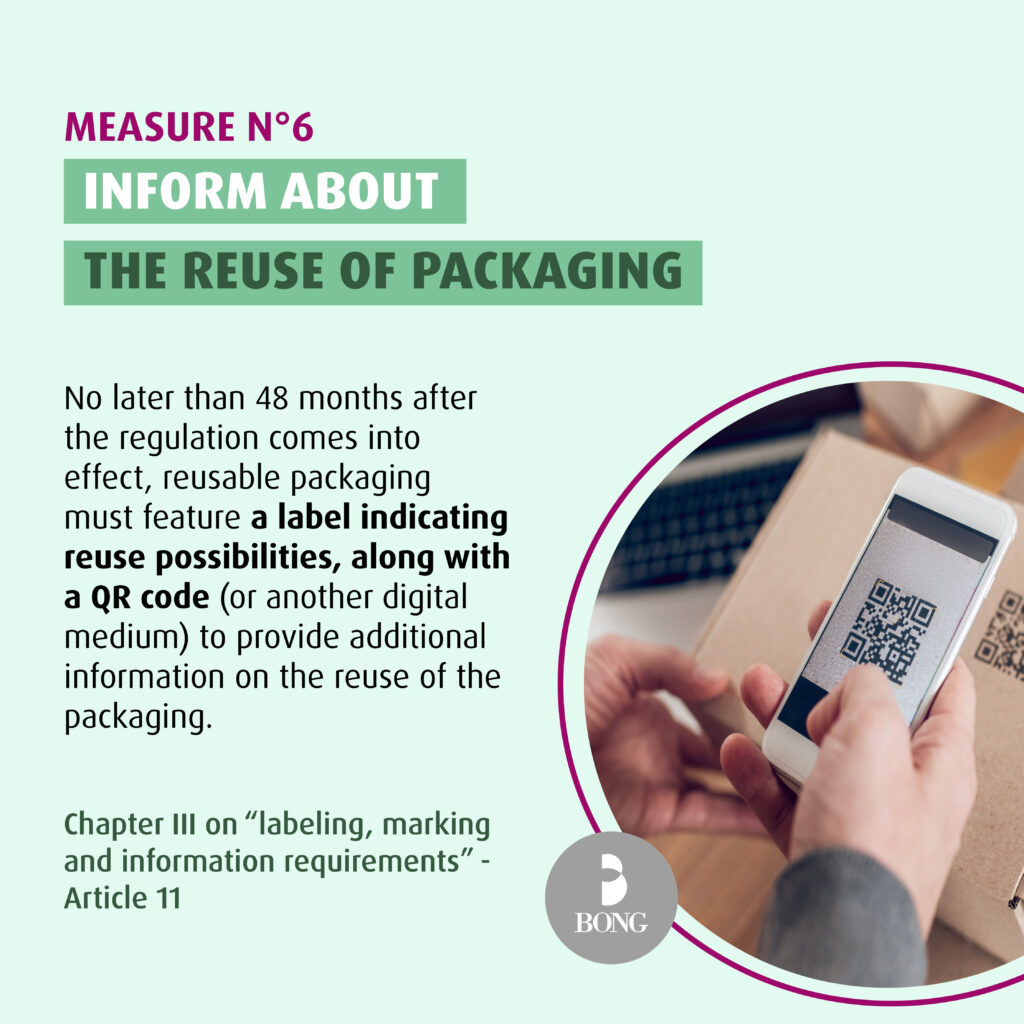
Packaging intended for reuse must, within 48 months of the regulation’s initiation, feature a label specifying reuse possibilities. Additionally, it must incorporate a visible and permanent QR code (or alternative digital support) to give more details on the potential for reuse.
Requirement #7: Ensure the Reuse of Transport Packaging
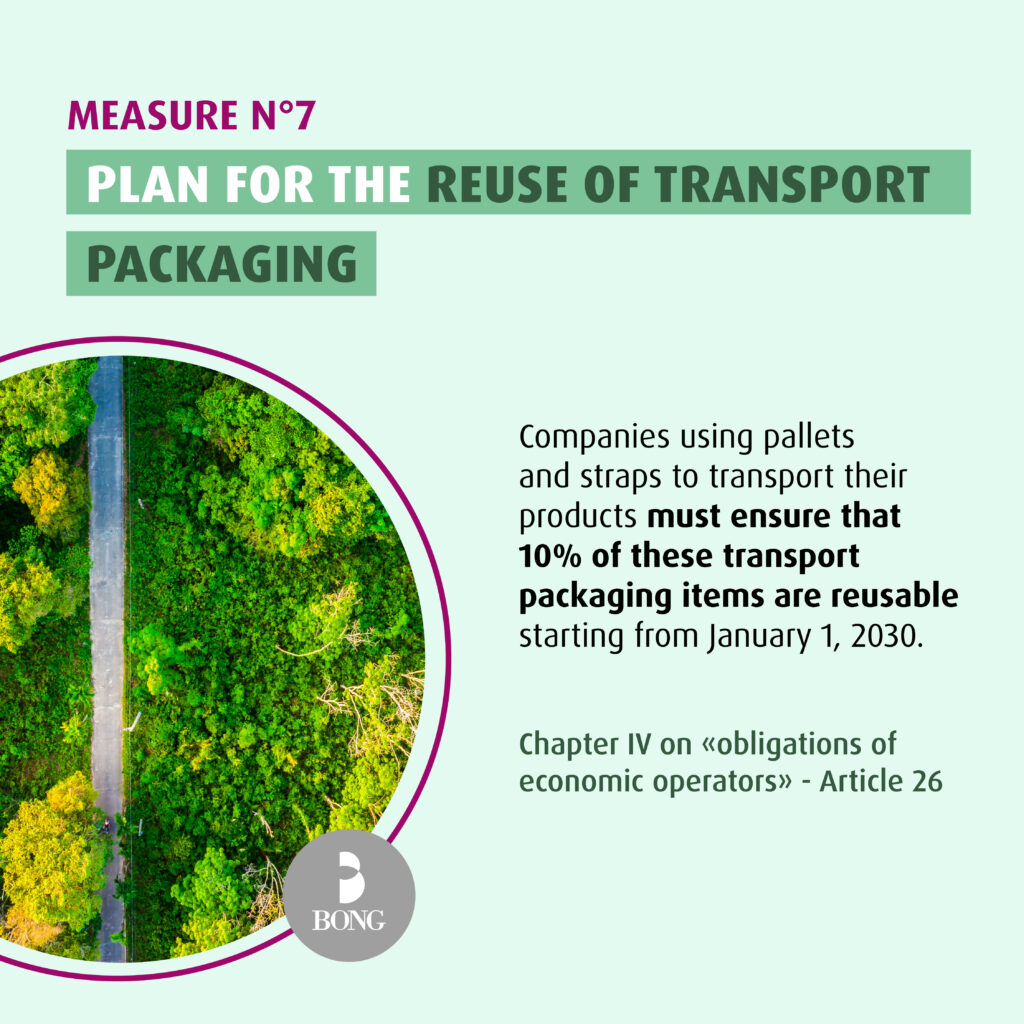
Companies employing transport packaging such as pallet packaging and straps for product transportation must guarantee that 10% of this transport packaging is reusable starting from January 1, 2030. This percentage requirement will elevate to 30% on January 1, 2040.
Similarly, for companies utilizing transport packaging in the form of pallets, plastic crates, foldable plastic boxes, buckets, and drums, it is incumbent upon them to ensure that 30% of this transport packaging is reusable from January 1, 2030. This proportion will further increase to 90% as of January 1, 2040.
Requirement #8: EU Conformity Declaration for Packaging
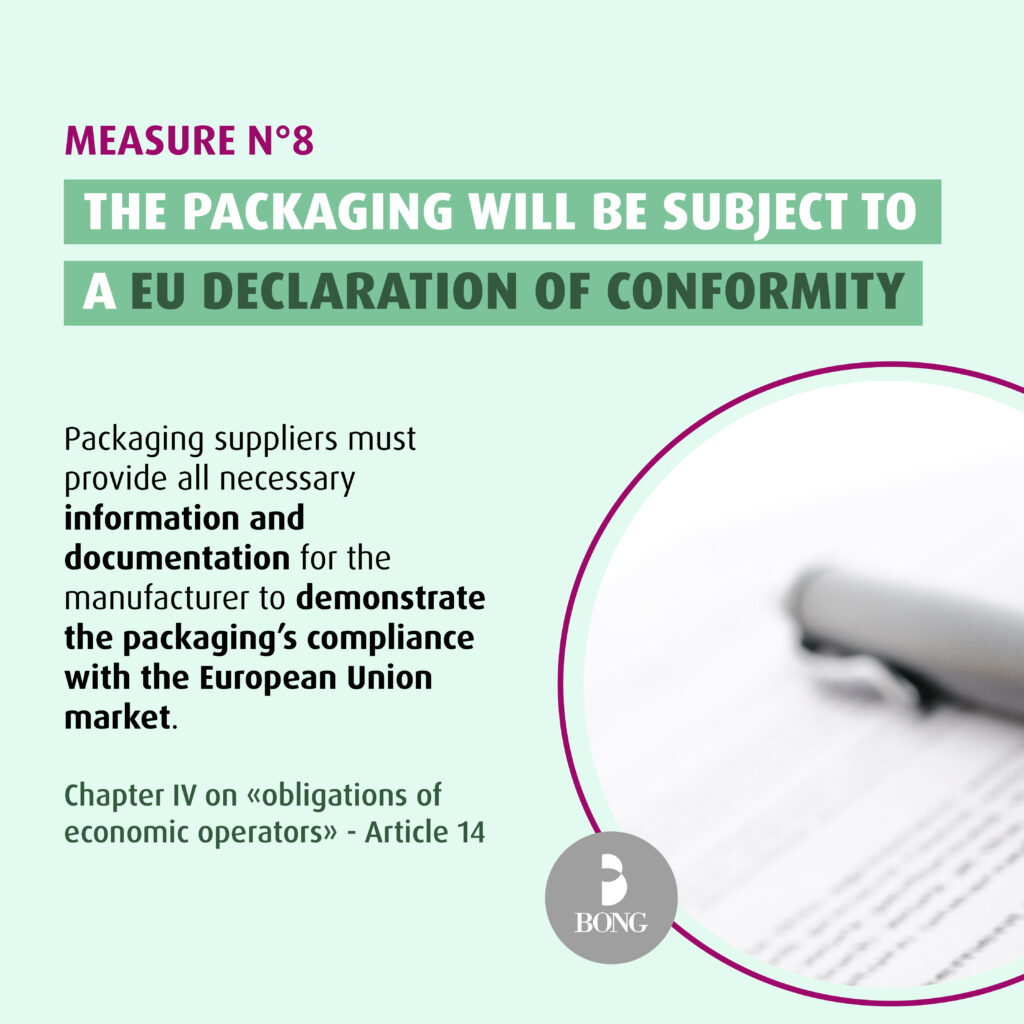
Suppliers of packaging or packaging materials are obligated to furnish the manufacturer with comprehensive information and documentation (in either paper or electronic format). This provision is essential for enabling the manufacturer to substantiate compliance with the requirements outlined in the PPWR.
Requirement #9: Member states must decrease the quantity of packaging waste
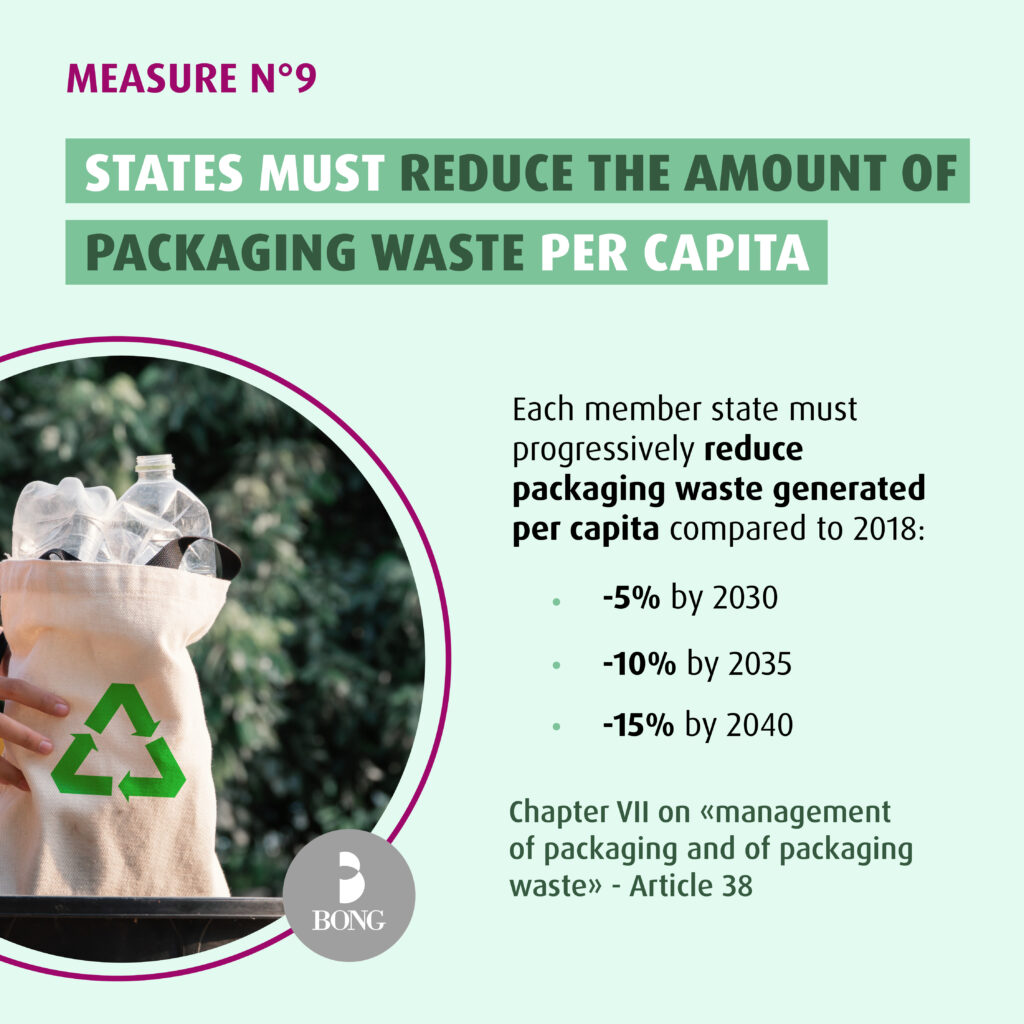
States are required to diminish the amount of packaging waste generated per capita in a phased manner, with each member state of the European Union aiming for gradual reductions compared to the levels observed in 2018:
5%
waste reduction per capita by 2030
10%
waste reduction per capita by 2035
15%
waste reduction per capita by 2040
Requirement #10: States are mandated to attain recycling objectives
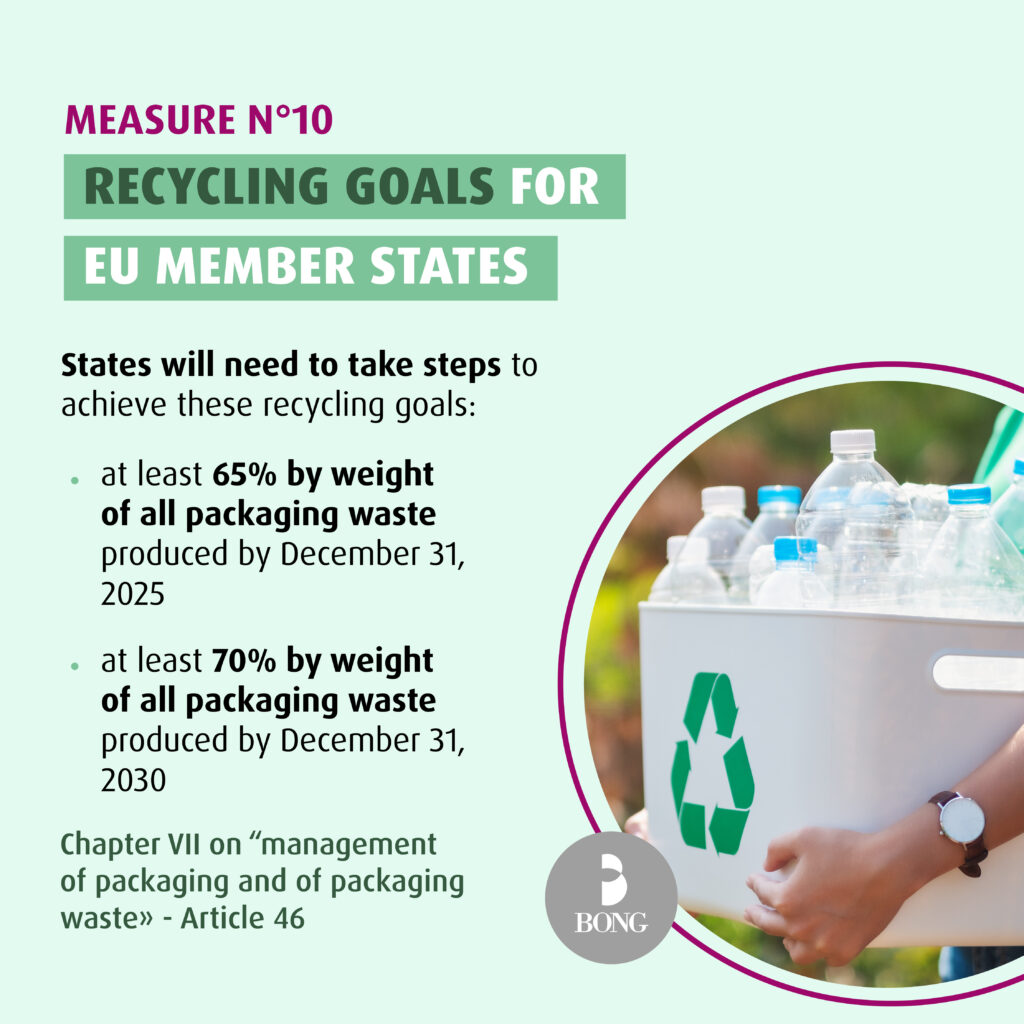
65%
A minimum of 65%, by weight, of all packaging waste produced must be recycled by December 31, 2025.
70%
A minimum of 70%, by weight, of all packaging waste produced must be recycled by December 31, 2030.
Following its endorsement by the European Parliament on November 22, 2023, the Regulation on Packaging and Packaging Waste (PPWR) was presented to the environmental ministers of member states on December 18, 2023, during the Council of the European Union. Extensive negotiations ensued among the Twenty-Seven to accommodate diverse national interests. The outcome reflects the Council’s commitment to curbing packaging waste production while affording member states ample flexibility in implementing the regulation. Additionally, the enforcement of the text experiences a one-year delay, taking effect 18 months post-adoption.
Meanwhile, other EU countries like France and its 2020 Anti-Waste Law for a Circular Economy took proactive measures to encourage waste reduction and combat single-use plastic, predating the intervention of the European Parliament and the publication of the PPWR.
At Bong Retail Solutions, we take pride in being a dedicated partner committed to minimizing its environmental footprint. We have crafted product ranges with a focus on decreasing their impact on the planet. Our responsibility is to take immediate action towards circular economy by enhancing every phase of a product’s life cycle, ultimately transforming it into a reusable raw material for new products.
In our commitment to sustainability, we pledge to provide a paper alternative for every plastic-based products. For example, we address the need for plastic shipping bags by developing durable, recyclable, and reusable FSC® paper e-commerce solutions. These alternatives are well-suited for a wide range of e-commerce products, facilitating eco-friendly choices, including convenient customer returns with a double adhesive strip.
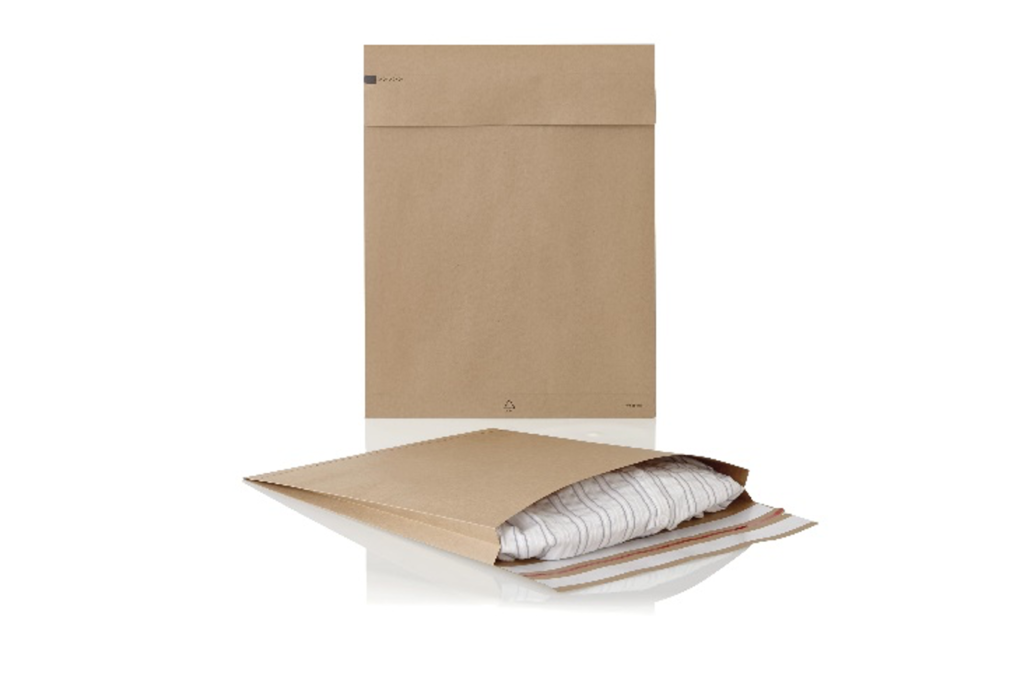
To know more about packaging solutions and PPWR regulation, follow Bong Retail Solutions on LinkedIn!

Bong collaborates with the ESAT of Eure to promote access to work for all
For almost two years now, Bong and the ESAT of Eure have been collaborating to promote inclusion and access to work for all. Bong welcomes workers with disabilities to its factory near Evreux, in Normandy and installed finishing machines within the ESAT.

Permaculture at the factory: a CSR initiative by Bong
After defining an ambitious CSR policy, Bong launched its permaculture project and created, with the involvement of collaborators, a vegetable garden to grow fresh fruits and vegetables. A perfect way to learn, share good moments as a team, raise awareness about the preservation of biodiversity and promote healthy eating.

[Job offer] Key Account Manager Retail France
We’re looking for our future Key Account Manager Retail France to work within our European Sales Department, on the French market. Handle a portfolio of large corporate customers, and support them in their business challenges by offering high-quality support. Apply now to be part of our customers’ success stories.
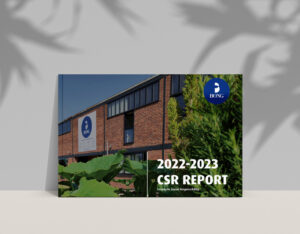
Our 2022-2023 CSR report is now available!
We are introducing our new CSR report, an overview of the initiatives undertaken throughout 2022 and 2023 in collaboration with our clients, staff and stakeholders. Download our new CSR report now!
